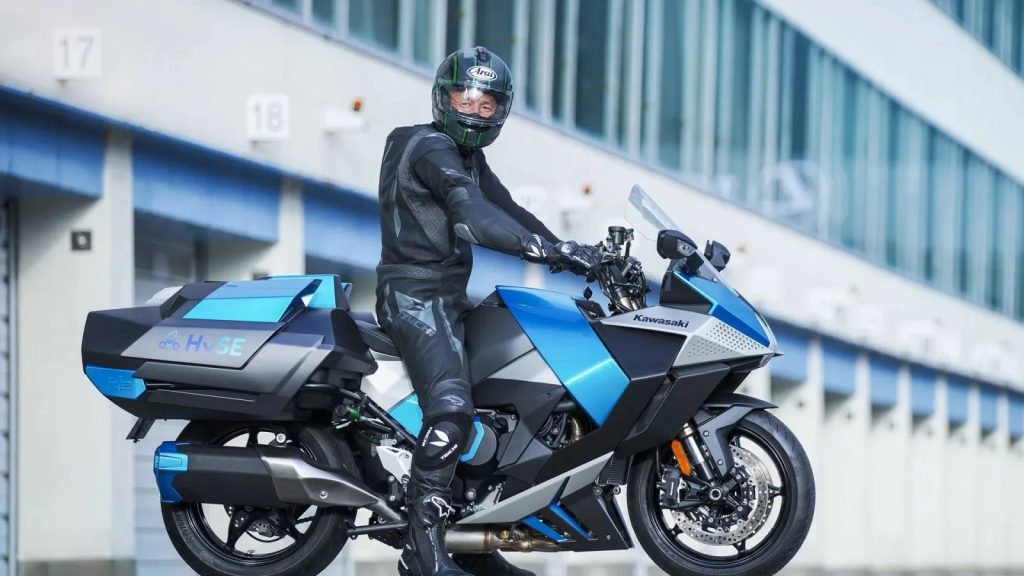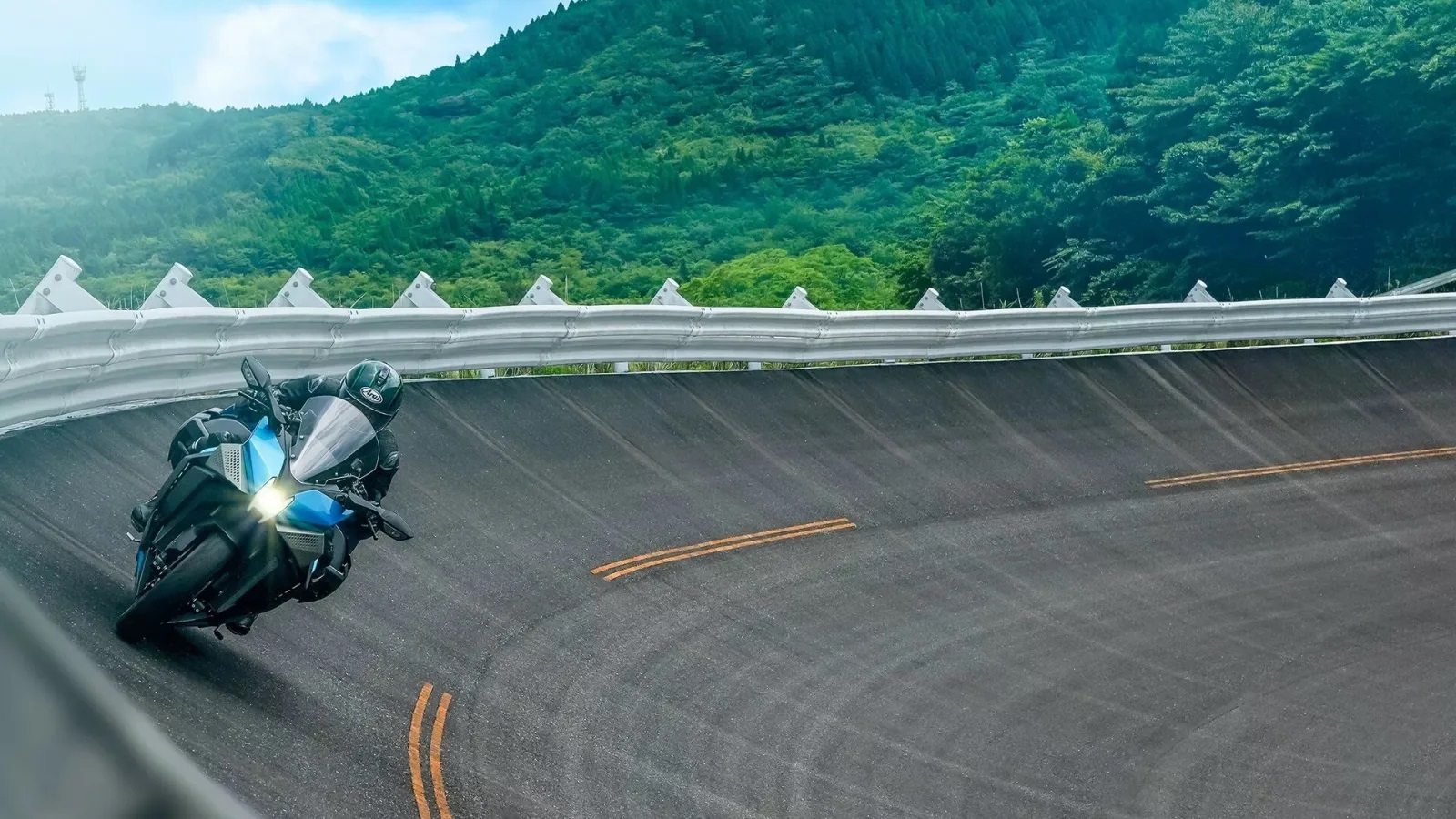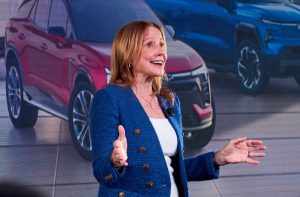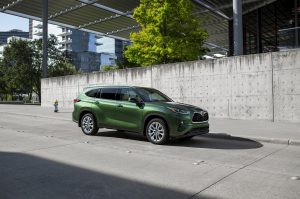Japanese motorcycle manufacturer Kawasaki previews a new avenue for the internal combustion engine with the unveiling of the experimental HySE hydrogen motorcycle. The prototype shows how Kawasaki is exploring ways to maintain the ICE engine as the race for electrification picks up steam in the motorcycle market.
Electrification and other alternative fuels are typically associated with traditional cars and trucks with automakers pouring millions of dollars into EV models that are rapidly becoming a very important segment of the automotive market with many companies also researching alternative fuels like hydrogen.
However, it can be easy to forget that a similar trend is happening in the motorcycle world with companies also investing in all-electric motorcycle models with the models promising to bring all-electric riding to buyers that want an efficient way to get around town. While progress has been moving along at a steady pace, some of these motorcycle manufacturers are also discovering that some riders are resisting the change and want to maintain access to ICE-powered models. Kawasaki is taking notice and it has formally unveiled an experimental bike that combines ICE performance with clean fuel technology to potentially deliver the best of both worlds to riders.
Futuristic HySE is crystal ball into the future

HySE is powered by a supercharged four-cylinder and is a glimpse into how motorcycles can embrace clean fuels and still have ICE powertrains.
The exterior styling of the HySE is a futuristic departure from some of Kawasaki’s production bikes with sharp curves and the trademark H-shaped headlight. Unlike a traditional car, the hydrogen tanks are more difficult to integrate into a motorcycle due to the smaller dimensions that engineers have to work with when integrating all of the parts.
In this case, Kawasaki solved that problem by integrating them into a luggage case setup at the rear of the bike. Hydrogen is lighter than liquid gasoline and while the setup may seem awkward when viewed by observers, the extra weight added would be minimal which would mean that riders should have an easy time operating the bike when putting it through its paces. Kawasaki says that the chassis for this bike is brand new and was designed from the ground up to accommodate hydrogen technology.
More Alternative Fuel Stories
- New 2025 Honda CR-V e:FCEV Gets the Automaker Back into the “Hydrogen Economy”
- Alpine Alpenglow Hy4: From Concept to Rolling Hydrogen-Powered Testbed
- Soaring Fuel Prices Threaten Market for Hydrogen Vehicles
HySE also faces the same hurdles as cars

The futuristic bike looks cool, but it still faces the same basic obstacles as hydrogen cars including a lack of infrastructure.
Kawasaki said that development of the HySE began back in 2022 with the prototype also allowing Kawasaki to become the first motorcycle company to test a hydrogen-powered motorcycle when it rolled it out on the Suzuka raceway in Japan. The company chose to not reveal formal performance data for the bike, but did confirm that the prototype is powered by a 998 cubic-centimeter supercharged four-cylinder which shares some DNA with the engine that’s found in the Ninja H2. The engine has been modified to burn hydrogen instead of gasoline with much of its internal components being exclusive to the HySE.
Like hydrogen-powered cars, hydrogen-fueled motorcycles face the same core obstacles with infrastructure and the rising cost of hydrogen fuel itself serving as the main barriers towards widespread adoption. The HySE itself is not entering production anytime soon with the company saying that the project is in the very early stages of development. However, look for the HySE to perhaps provide a glimpse into what the future could hold for motorcycles and how ICE engines might still be able to be offered as the world embraces cleaner fuels and tighter emission rules.






0 Comments